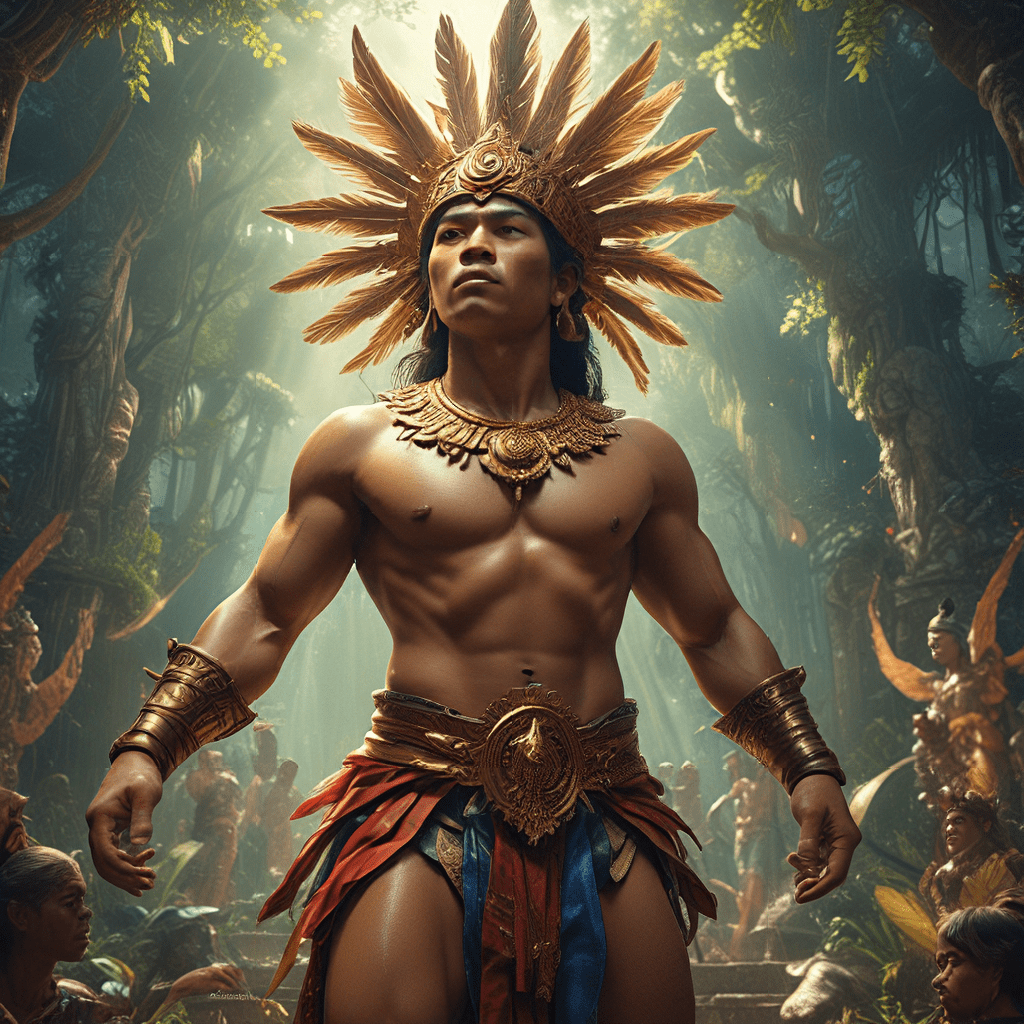The Mythology of the Hopi Tribe
Introduction
The Hopi people, an indigenous tribe residing in the southwestern United States, possess a rich and intricate mythology that not only explains their origins but also guides their spiritual beliefs and daily lives. Hopi mythology has been passed down through generations via oral tradition and is considered a vital aspect of their cultural identity.
Creation Myth
Central to the Hopi belief system is the creation myth, which narrates the emergence of the world from the depths of darkness. According to this myth, Taiowa, the Creator, brought forth the first beings, consisting of the Star People and Cloud People. These celestial beings descended from the heavens, bringing life and order to the nascent world.
The Four Worlds
Hopi mythology postulates the existence of four distinct worlds, each characterized by specific attributes and challenges. The First World, Tokpela, was a realm of harmony and abundance, inhabited by the Star People. The Second World, Tokpa, witnessed the introduction of evil and strife, leading to the emergence of humans. The Third World, Kuskurza, was a period of darkness and upheaval, prompting the Hopi to seek refuge in the Fourth World, Tuwaqachi.
The Emergence Journey
The Hopi myth of the Emergence Journey recounts the tribe's migration from the Third to the Fourth World. Guided by the Kachinas, ancestral spirits, the Hopi faced numerous trials and tribulations during their arduous trek. Along the way, they acquired valuable knowledge and rituals that continue to shape their traditions and ceremonies.
Migration and Settlement
Upon arriving in the Fourth World, the Hopi established permanent settlements in the mesas of northern Arizona. They developed a complex system of agriculture, architecture, and social organization, all of which were influenced by their mythological beliefs. The Hopi belief in the sanctity of the land played a crucial role in their relationship with the natural world, emphasizing stewardship and harmony.
6. The Kachinas
Central to Hopi mythology are the Kachinas, ancestral spirits who serve as messengers between the human and divine realms. Kachinas are believed to manifest during religious ceremonies, appearing in elaborate costumes and masks. They bring blessings, healing, and guidance to the Hopi people, reinforcing their cultural identity and spiritual beliefs.
7. The Prophecy of the Dawn of the Fifth World
Hopi mythology encompasses a profound prophecy that foretells the transition to a Fifth World. This prophecy outlines a series of events that will culminate in a period of great upheaval and purification, followed by the emergence of a new era of peace and harmony. The Hopi believe that their role is to maintain the balance and harmony of the world, ensuring a smooth passage into this new world.
8. Rituals and Ceremonies
Religious rituals and ceremonies hold immense significance in Hopi culture, serving as conduits for communication with the Kachinas and the divine realm. These ceremonies, often involving elaborate dances, songs, and prayers, aim to maintain spiritual harmony, promote healing, and bring blessings upon the community. The Hopi believe that their ceremonies are essential for maintaining the balance and well-being of the world.
9. Hopi Values and Beliefs
Hopi mythology deeply influences the tribe's values and beliefs. It emphasizes the interconnectedness of all living things, the importance of living in harmony with nature, and the value of a just and compassionate society. The Hopi believe that their actions have consequences not only for themselves but also for the entire world, instilling a sense of responsibility and stewardship towards their environment.
10. Conclusion
The mythology of the Hopi Tribe offers a profound and multifaceted understanding of the world, providing a framework for their beliefs, rituals, and values. Through their creation myth, the four worlds, and the prophecy of the Fifth World, the Hopi people express their deep connection to the divine, their respect for the natural world, and their abiding hope for a future filled with harmony and balance.
FAQ
Q: Are the Hopi people still practicing their mythology today?
A: Yes, the Hopi people continue to uphold their mythological traditions, integrating them into their daily lives, rituals, and ceremonies.
Q: What is the significance of the Kachinas in Hopi mythology?
A: Kachinas are revered as ancestral spirits who serve as intermediaries between the human and divine realms, bringing blessings, healing, and guidance to the Hopi people.
Q: What is the purpose of Hopi rituals and ceremonies?
A: Hopi rituals and ceremonies aim to maintain spiritual harmony, promote healing, bring blessings upon the community, and communicate with the Kachinas and the divine realm.
Q: How does Hopi mythology influence their values and beliefs?
A: Hopi mythology emphasizes interconnectedness, harmony with nature, and the importance of a just and compassionate society, shaping their values and fostering a sense of stewardship towards their environment.
Q: What is the prophecy of the Dawn of the Fifth World?
A: The prophecy foretells a transition to a Fifth World, involving a period of upheaval and purification followed by an era of peace and harmony. The Hopi believe they play a role in ensuring a smooth passage into this new world.



